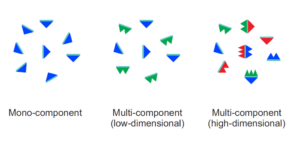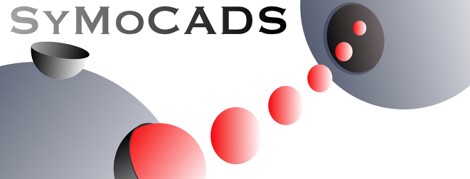Project P7
P7: Transmitter Systems for Releasing and Sending Airborne MC Signals as “Odor Objects”
 Motivation and state of the art:
Motivation and state of the art:
The fundamental principle of (natural) olfactory MC is the representation of information by mixtures of different types of molecules. These molecule mixtures are known as “odor objects”1-3. The principle behind an odor object is generally a combinatory composition of substances that “codes” meaning such as nutritional value, ripeness, toxicity, infectious or developmental/reproductive status to name but a few4. These odor mixtures often include several representatives of different substance classes. For instance, such a chemical coding is transmitted for ripeness by the group of esters, for chemical oxidation by fatty-acid derived aldehydes and ketones, and for (wild)fire by phenolic and cyclic lignin and carbohydrate derivatives5. Successful delivery of such information depends on the robustness of the odor object composition during its release, propagation, and reception. Evolution has driven (natural) transmitters to employ odor objects and release mechanisms that facilitate robust mixture propagation and emission in order to ensure reliable delivery of the information encoded in the airborne MC signals6-9. Thereby, local and spatial arrangement and distribution, mode and effectiveness of (passive or active) propulsion, and (inadvertent or intentional) utilization or avoidance, or at least consideration of environmental factors, such as mobility of the gas phase (air flow, laminar or turbulent) or gas phase composition (e.g., humidity or particulate matter as in smog scenarios) and environmental factors (e.g., temperature), need to be considered. Similar to living organisms in nature, synthetic transmitter systems need to be adaptive to their environment, in consecutive evolutionary steps, to achieve ever higher levels of sophistication – but always according to the requirements of a specific scenario or situation. Successful transmitter systems need to anticipate and take into account interference effects and need to be able to react to and compensate for such influences. However, the fundamental considerations for such modes of action need to be established based on chemical and physico-chemical considerations and fundamental molecular knowledge, which will be done in this project.
Objectives:
The goal of this project is to investigate the fundamental principles of releasing and sending information as odor objects in airborne MC systems, and to translate these into abstract concepts for representation and theoretical and practical investigation. The goal is not to copy and reproduce natural systems but rather elaborate general and fundamental principles. We will (i) focus on the molecular-structural aspects of coding in odor objects, and how information is represented by single substances or rather combinations of substance classes, and we will derive therefrom synthetic and representative odor objects, to allow (ii) for further experimentation on testbed level, and for theoretical modelling in P9. The aim here is to gain a generalized fundamental understanding of the creation and delivery of odor objects per se in nature, and the possibility of translation into technology.
References
1.Yeshurun and N. Sobel, „An Odor is Not Worth a Thousand Words: From Multidimensional Odors to Unidimensional Odor Objects,“ Annu. Rev. Psychol., vol. 61, pp. 219-241, 2010.
2.Gottfried, „Central Mechanisms of Odour Object Perception,“ Nat. Rev. Neurosci., vol. 11, no. 9, pp. 628-641, Jan. 2010.
3.Thomas-Danguin, et al. „The Perception of Odor Objects in Everyday Life: A Review on the Processing of Odor Mixtures,“ Front. Psychol., vol. 5, p. 504, Jun. 2014.
4.Buettner, ed. Springer Handbook of Odor, Springer, 2017.
5.Guthrie, J. Beauchamp, A. Buettner, S. Toth, and M. Qian (Eds.). Sex, Smoke, and Spirits: The Role of Chemistry, American Chemical Society, 2019.
6.David Morgan, „Trail Pheromones of Ants,“ Physiol. Entomol.,vol. 34, pp. 1-17, Feb. 2009.
7.Hartmann, S. Doucet, Y. Niclass, R. Dittrich, S. Cupisti, B. Schaal, A. Buettner, and C. Starkenmann, „Human Sweat Odour Conjugates in Human Milk, Colostrum and Amniotic Fluid,“ Food Chem.,vol. 135, pp. 228-233, Nov. 2012.
8.Peters, N. Gravish, and S. Combes, „Wings as Impellers: Honey Bees Co-opt Flight System to Induce Nest Ventilation and Disperse Pheromones,“ J. Exp. Biol., vol. 220, pp. 2203-2209, Jun. 2017.
9.Shigaki, et al. „Analysis of the Role of Wind Information for Efficient Chemical Plume Tracing Based on Optogenetic Silkworm Moth Behavior,“ Bioinsp. Biomim., vol. 14, pp. 046006, May 2019.
